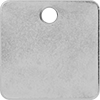Filter by
Mount Type
Message Type
Message
Material
Width
Color
Message Color
Thickness
Export Control Classification Number (ECCN)
DFARS Specialty Metals
Message Contains
Accident Prevention Message Type
Header Color
Specifications Met
Diameter
Maximum Temperature
Communication
Building and Machinery Hardware
Containers, Storage, and Furniture
Facility and Grounds Maintenance
Safety Equipment











































